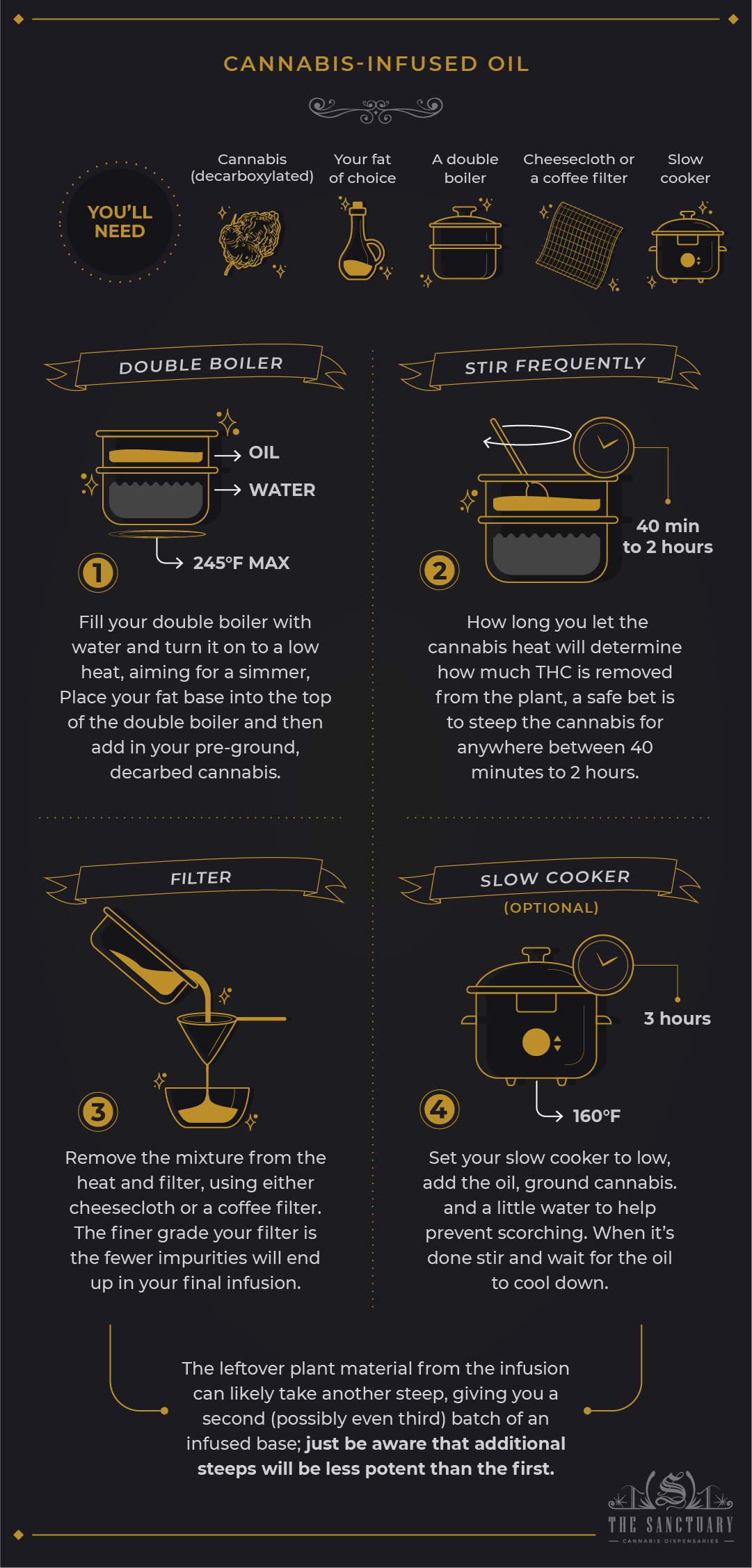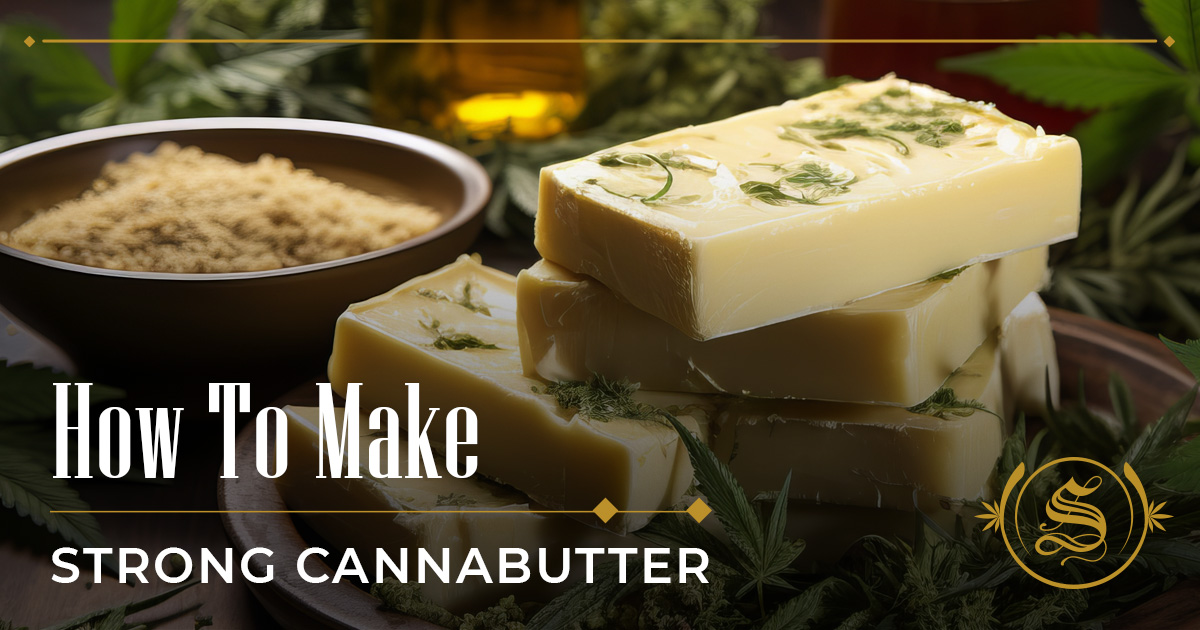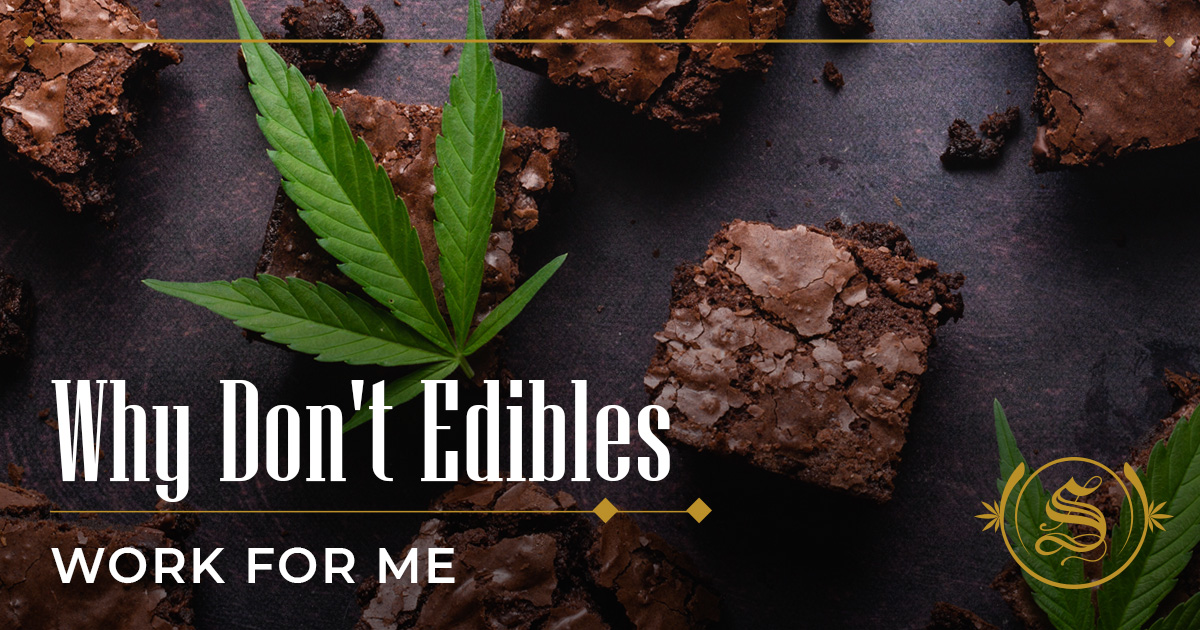Iftikhar Alam
Author
Reviewed by Cannabis Experts
Published on: April 8, 2021 | Updated on: July 27, 2024
Edibles are popular among cannabis users because of their simplicity of use, long-lasting effects, and, in certain circumstances, additional potency. You may prepare your own weed snacks in the comfort of your own home if you have some flower and other materials on hand.
One of the most appealing aspects of producing your own cannabis-infused meals is that the possibilities are endless. You may use your own handmade cannabis-infusion foundation to produce your favorite baked products or savory dishes, combining the advantages of edibles with the gastronomic pleasure of your own favorites.
However, preparing edibles at home may be challenging. Simply sprinkling dried weed flower into cookie dough or using it as a herb on top of spaghetti will not suffice. When THC, the psychoactive component of cannabis, is not decarboxylated, it does not provide the effects of being high.
Decarbing your weed
Before you can begin producing edibles at home, you must first decarboxylate the cannabis, which is an important element of any edibles process.
Decarboxylating weed, also known as decarbing, is the process of converting the non-psychoactive THCA in raw weed into THC, the cannabinoid responsible for the “high” experience.
Decarboxylation is a chemical process that is influenced by two factors: heat and time. When cannabis decarboxylates, it loses a carboxyl group, allowing it to connect with the body’s receptors, which are responsible for medicinal and recreational effects.
Cannabinoids decarboxylate on their own after an outstanding period of contact with the environment, which is why appropriate cannabis storage is so crucial. Cannabis will lose potency without airtight storage in a sufficiently strong container since cannabinoids progressively decarboxylate and activate prematurely.
The active cannabinoids in cannabis are absorbed through digestion when it is cooked or baked. Weed decarbing also aids in the reduction of microbiological pollutants.
When weed decarboxylates, it loses moisture, reducing the likelihood of bacterial development. Weed is dried and cured for the same purpose, however during the curing process, some undesired cannabinoid activation and therefore potency loss is unavoidable.
How to decarb your weed
The most popular method for decarbing weed is to softly bake it. The following items will be required:
- An oven
- Baking/cookie sheet
- Weed (flower, kief, or trim)
- Parchment paper
After you have gathered your materials, follow the instructions below to properly decarb your weed.
Step 1: Heat up your oven
Preheat the oven to 235 degrees Fahrenheit. Place the parchment paper on the baking pan and evenly distribute the weed nugs. If necessary, break up bigger bits with your hands; you’ll want even, tiny buds so that they decarb at about the same rate.
Step 2: Put your weed in the oven
Bake the weed for 30 minutes. This should be enough time for well-dried cannabis to decarb. However, if you are using fresher cannabis with higher moisture, it could take a little longer. To avoid overbaking, keep an eye on it.
Step 3: Remove and let cool
Remove the baking sheet from the oven after 30 minutes and set it aside to cool. The decarboxylation process is now finished, and the bulk of the THCA should have been transformed to THC.
Making cannabis infusions
It’s time to prepare an infusion now that your cannabis has been decarbed. Almost any type of fat may be infused with cannabis. Your choice of material is based on your particular preferences.
Fortunately, the procedure is similar for almost any oil or fat you want to use. Refined oils may be steeped for extended periods of time without the finished result degrading. Cream or butter infusions, on the other hand, require a bit more care.
Because of its capacity to maintain a semi-solid form at room temperature, coconut oil is a particularly useful option.
Cannabis-infused oil
You need the following items to make an oil-weed-infusion:
- Decarbed weed
- Your preferred fat (oil, butter, cream, etc)
- Cheesecloth (coffee filter also works)
- Double boiler (or a heat-proof bowl placed on top of a pot filled with water)
- Slow cooker (optional)
You should use a 1:1 ratio of cannabis to oil while producing cannabis oil.
Making an infused oil is a straightforward process. Fill your double boiler (or equivalent setup) halfway with water and heat to a low simmer (the temperature of the oil should never exceed 245 degrees Fahrenheit). Fill the top of the double boiler with your fat base, then add your pre-ground, decarbed cannabis.
Allow the mixture to soak at the appropriate temperature, stirring gently but often. The amount of THC taken from the plant depends on how long you let it steep, but longer heating durations and higher temperatures can cause other substances like chlorophyll and lipids to leech out of the plant tissue as well. Steep the cannabis for 40 minutes to 2 hours if you want to be safe.
Remove the mixture from the heat once you have reached your desired steeping period and filter it through a cheesecloth or a coffee filter. The finer the filter, the fewer contaminants will end up in the finished infusion, but it will take longer to strain.
Your THC-infused oil is now ready to use in whatever edibles you choose. The remaining plant material from the infusion can likely be steeped again, yielding a second (or even third) batch of the infused base; however, keep in mind that subsequent steeps will be less powerful than the first.
A slow cooker can also be used to duplicate this approach. Set the temperature of your slow cooker to low, or approximately 160 degrees Fahrenheit. Combine the cannabis oil and ground cannabis in a mixing bowl. You may also add a splash of water to avoid burning. Stir once in a while. Turn the crockpot off after 3 hours and wait for the oil to cool.
Cannabis-infused milk or cream
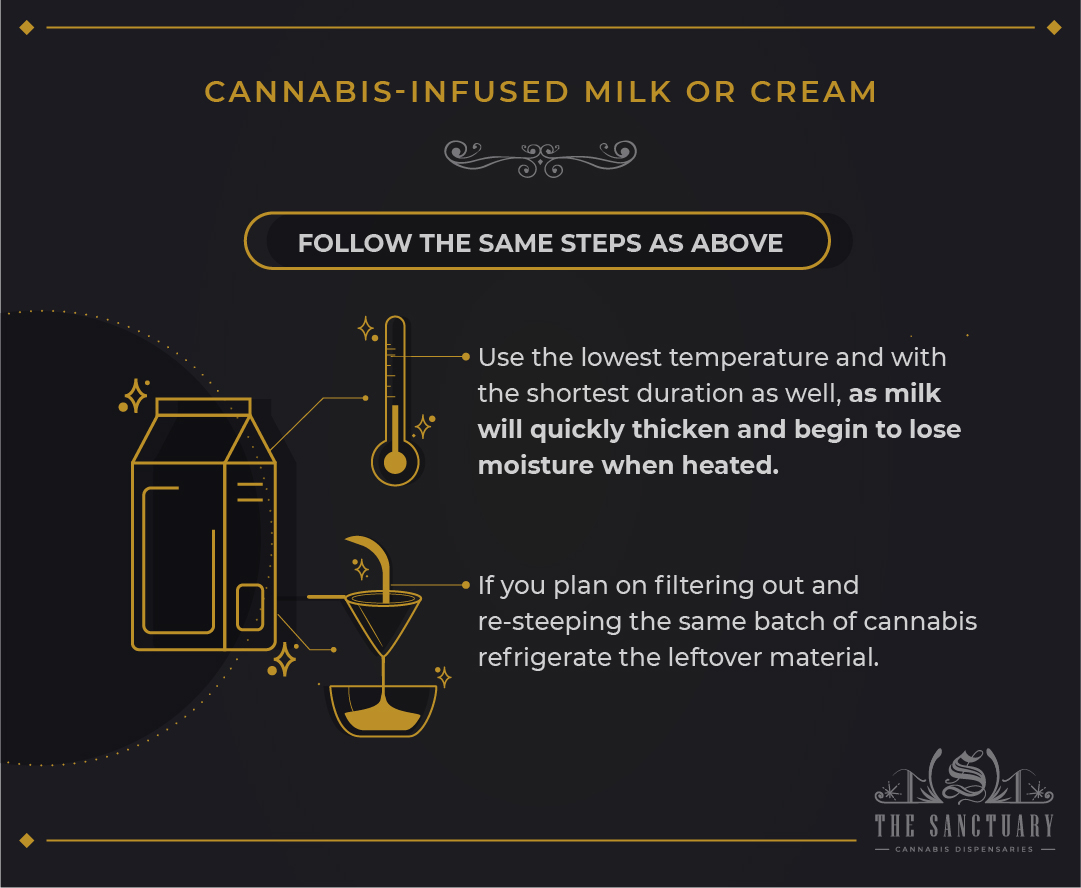
Your procedure will be the same as described above, with the exception that you must closely monitor your infusion. We recommend heating milk or cream to the lowest temperature you are comfortable with for the shortest time possible, as milk thickens and loses moisture fast when heated.
If you’re going to filter out and re-steep the same batch of cannabis, keep the leftover plant material refrigerated; milk spoils fast at room temperature.
Cannabis-infused butter (cannabutter)
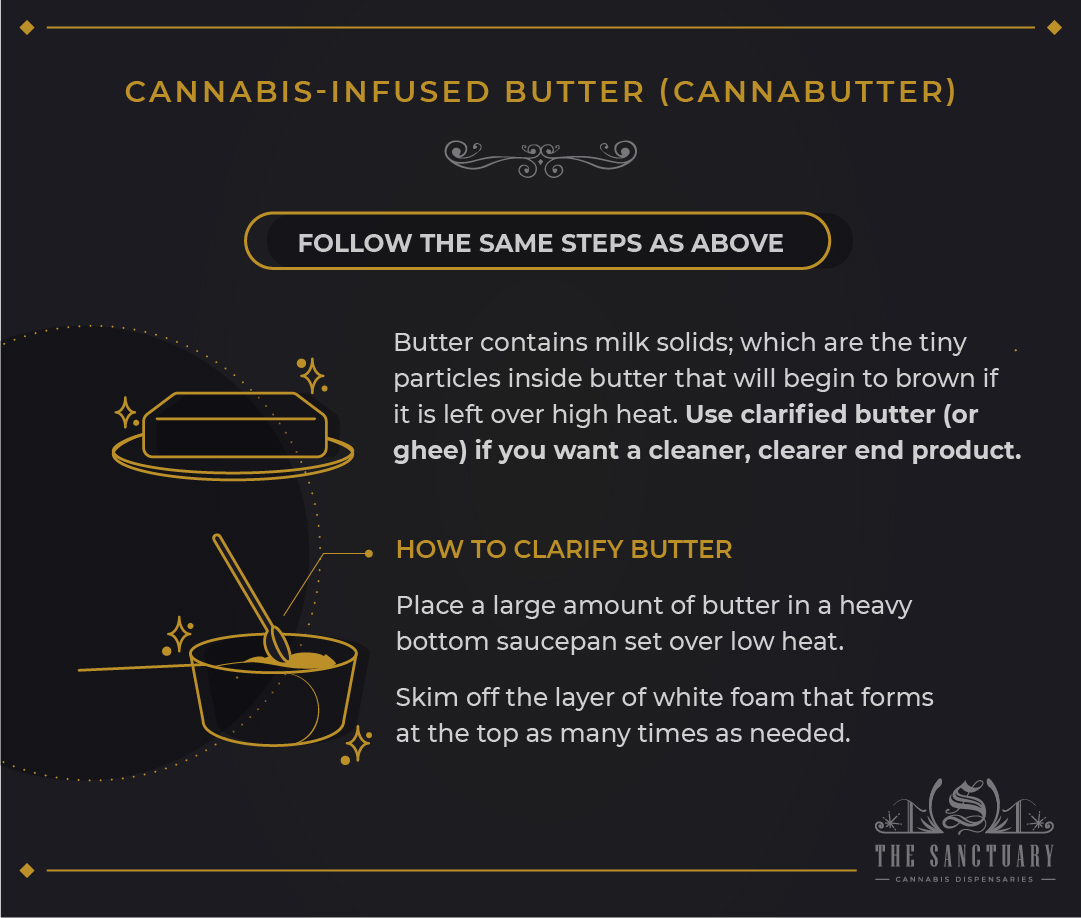
The previous methods will still work if you are making cannabutter, but there are a few things to keep in mind about butter.
Butter includes milk solids, which are the microscopic particles inside butter that will brown if left on a high heat setting. If you use clarified butter (or ghee) instead, the finished result will be cleaner and clearer.
Simply pour a substantial amount of butter in a heavy bottom pot over low heat to clarify it at home. Skim off the layer of white foam that develops on top of the melted butter and continue until the butter is totally clear.
How to make “firecrackers”
Firecrackers are the easiest edible you can possibly make. It is also the worst tasting. This is because unlike the other forms of edibles, firecrackers involve actually eating ground-up weed. Regardless, this could be your best bet if you just want to produce edibles at home without having to prepare an infusion.
You will need the following items to make firecracker edibles :
- A package of crackers (graham crackers, Ritz brand, etc.)
- Creamy peanut butter (other kinds of nut butter will also work as well as Nutella spread)
- Decarbed weed (ground up)
- Oven
- Tinfoil
Preheat the oven to 300 degrees Fahrenheit. While the oven heats up, spread your peanut butter on one of the crackers and then evenly distribute your finely ground-up weed.
Once applied, use your knife to stir the cannabis into the peanut butter as much as possible, ensuring that the flower is well coated. Spread a small amount of peanut butter on a second cracker (just enough to stick) and sandwich the two together. You may make as many of them as you want.
Wrap your constructed cracker securely in tin foil and bake for 20 minutes. Remove the foil packets from the oven when the timer goes off and let them cool fully before eating.
How to dose your homemade edibles
The amount of weed infusions you want to use depends on how well you dose your DIY edibles. To correctly dose your edibles, you’ll need to perform some arithmetic. Assume you start with 10 grams of flower that has 20% THC. This would leave you with a total of 2,000 mg of THC.
Keep in mind that by processing the cannabis, you will lose part of its THC strength. You will get 1,800 mg of THC after decarbing the flower (2,000 x 0.9). Following the extraction in oil or butter (1,800 x 0.6), the oil will contain 1,080 mg of THC, enough for 216 standard portions containing 5 mg each.
When it comes to edibles, a little cannabis goes a long way. Increase the amount of oil, butter, or cream to weed in a recipe to lessen the strength. You may also look for cannabis with a low THC content and a greater CBD content. Just make sure to double-check your figures and tweak the math properly.
Sources
Footnotes
- Peng H, Shahidi F. Cannabis and cannabis edibles: a review. Journal of Agricultural and Food Chemistry. 2021;69(6):1751-74.
- Blake A, Nahtigal I. The evolving landscape of cannabis edibles. Current Opinion in Food Science. 2019;28:25-31.
- Larkin Jr PJ. Marijuana edibles and gummy bears. Buff. l. rev.. 2018;66:313.
- Marangoni IP, Marangoni AG. Cannabis edibles: dosing, encapsulation, and stability considerations. Current Opinion in Food Science. 2019;28:1-6.
- Barrus DG, Capogrossi KL, Cates SC, Gourdet CK, Peiper NC, Novak SP, Lefever TW, Wiley JL. Tasty THC: promises and challenges of cannabis edibles. Methods report (RTI Press). 2016;2016.
References
- Cooking With Cannabis: A Beginner’s Guide To Making Marijuana Edibles. NuggMD. Accessed 4/9/2024.
- Cooking With Cannabis – Intro To DIY Florida Edibles. Florida Medical Cannabis Clinic. Accessed 4/9/2024.
- Decarboxylation: What Is It and Why Is It Important?. Luna Technologies. Accessed 4/9/2024.
The content provided on this blog is for informational purposes only and does not constitute medical, legal, or professional advice. Cannabis use is subject to local laws and regulations, which vary widely by jurisdiction. Always consult with a healthcare professional before starting any new treatment or altering an existing treatment regimen. The authors and publishers of this blog are not responsible for any actions taken based on the information provided herein. Use cannabis responsibly and in accordance with applicable laws. This blog is intended for adults aged 21 and over. The Sanctuary Dispensaries D186, D187.




